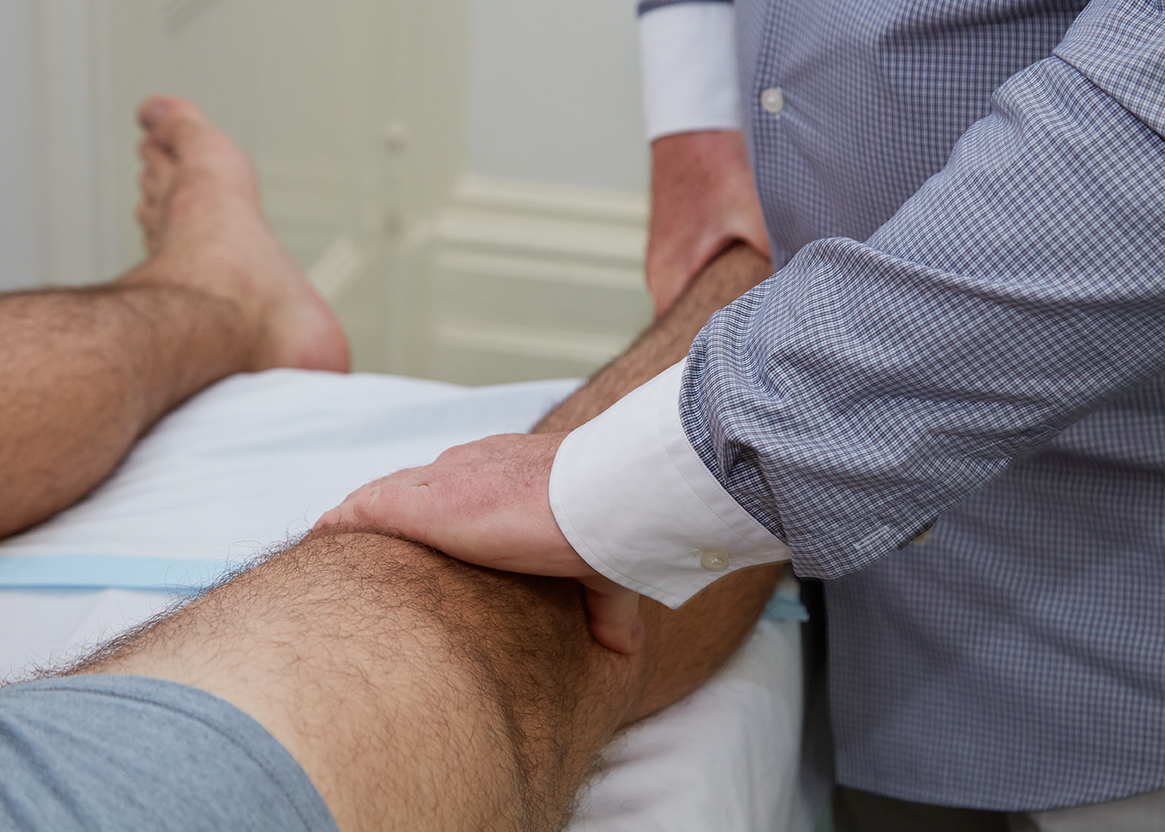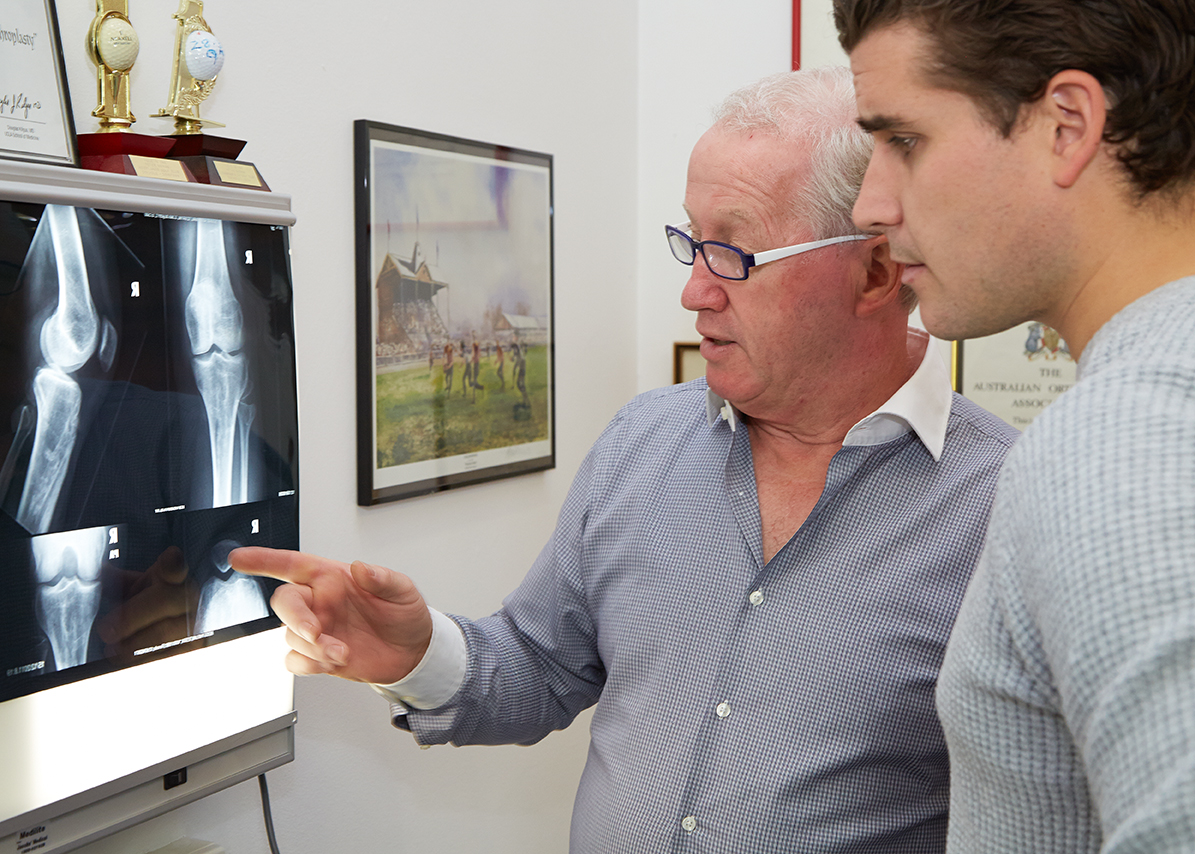 Knee arthroscopy is a minimally invasive surgical procedure performed through two small 5-10mm incisions (ie. key hole surgery) using an advanced HD camera and special instruments to visualise and work inside the knee joint. Almost all aspects of knee conditions can be treated successfully with knee arthroscopy.
Knee arthroscopy is a minimally invasive surgical procedure performed through two small 5-10mm incisions (ie. key hole surgery) using an advanced HD camera and special instruments to visualise and work inside the knee joint. Almost all aspects of knee conditions can be treated successfully with knee arthroscopy.
Some common conditions Mr Moran treats with knee arthrscopy include:
ACL rupture – ACL reconstruction is now a commonly performed arthroscopic procedure.
Meniscal tear – The meniscus is an important structure and can be repaired arthroscopically. If irreparable, the tear can be removed and the remnant stabilised.
PCL rupture – PCL reconstruction can also be performed arthroscopically.
Articular cartilage damage (early arthritis) – If caught early, articular cartilage damage can be repaired and stabilised. Otherwise, unstable flaps can be removed and the underlying bone prepared to encourage new cartilage to form, a process known as ‘micro-fracture’.
 Synovitis – Inflamed tissue around the knee can be removed (ie. synovectomy).
Synovitis – Inflamed tissue around the knee can be removed (ie. synovectomy).
Loose body – Bone, cartilage or any other loose tissue can be removed to prevent ongoing damage to the knee.
Biopsy – Tissue specimens can be taken to aid the diagnosis of certain conditions.
Washouts – For the treatment of knee infections.
Knee arthroscopy results in less tissue damage, less pain, less blood loss, and faster recovery and return of function. Depending on the procedure performed, most patients are allowed to immediately weight-bear and walk, and can go off crutches as soon as they are able. Knee arthroscopy is usually performed as a “day-case” (ie. going home the same day) however some procedures may require patients to stay overnight.
